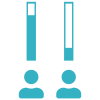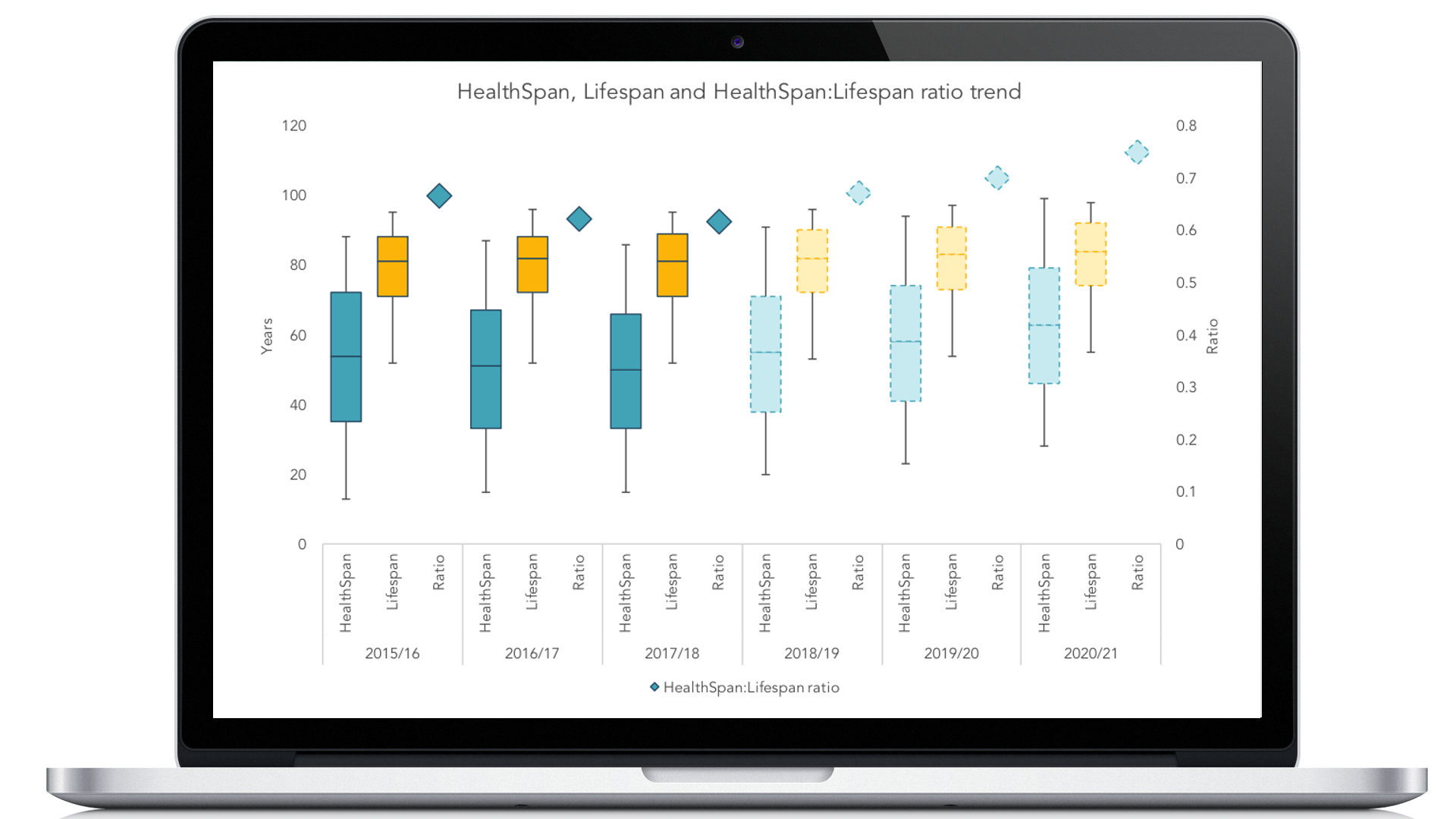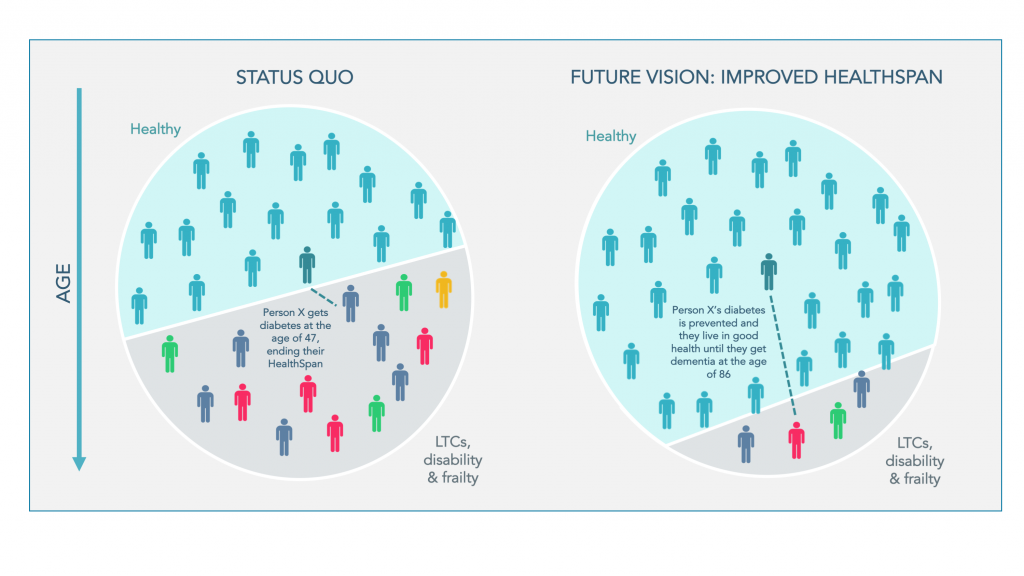HEALTHSPAN are a suite of outcomes that provide a novel and unique way of measuring the health of a population. It is an objective, data-driven, set of measures that is arguably the most important outcome of any health system. OBH can for the first time now establish the current HEALTHSPAN for a population, as well as estimates of potential savings through improvements in HEALTHSPAN, using linked, local health and care data.
The HEALTHSPAN suite of metrics includes:

CRUDE HEALTHSPAN
- Measures a population’s healthy life span: the age at which people first enter a period of significant ill health, and the number of years that were spent in good health
- Allows HEALTHSPAN to be analysed by deprivation deciles, gender and other features
- Useful for tracking local improvements of HEALTHSPAN in an area longitudinally over a period of time

RISK-ADJUSTED HEALTHSPAN
- Allows for the measurement of HEALTHSPAN, while accounting for differences in demographic factors (e.g. deprivation and gender) by area
- Risk-adjustment facilitates comparison of HEALTHSPAN between areas on a ‘like-for-like’ basis

HEALTHSPAN : LIFESPAN RATIO
- Provides the ratio of how much of a population’s life is spent in good health
- To ensure health and care systems are running efficiently and sustainably, improvements in lifespan need to be more than matched by improvements in HEALTHSPAN. Changes in this ratio provide that level of visibility, in near realtime.

HEALTHY POPULATION SIZE
- Gives insight into what proportion of the population is living free of significant illness/ill health at any point in time
- Provides insights into demographic information about the currently healthy population

HEALTHSPAN GAP
- The ‘gap’ in healthy years between the most and least deprived groups
- Available as static insight or tracked longitudinally over time

HEALTHY LIFESPAN® INDEX
- A composite life course measure of a population’s health status over time
- Covers all key population groups
WHY MEASURE HEALTHSPAN
If we want to keep people healthy longer, then we need to understand how, when, and why, people first enter a period of ill health in their lives. Proactively supporting people who are in good health now, would allow systems to work on primary prevention. That way, health and care systems can move towards helping people stay healthy longer.

Looking into insights from monitoring HEALTHSPAN over time will allow health systems to draw correlations on what the biggest driver variables are for when people’s health deteriorates, including chronic conditions that first show deterioration of people’s health. This can allow us to work towards reducing the incidence of disease before it occurs, keeping people healthy longer and reducing the burden of healthcare.
There are many evidence-based services, campaigns, products, devices and interventions, all geared towards delaying or preventing long-term conditions in the currently healthy population. In doing so, these interventions may be very good at improving population-level HEALTHSPAN. The issue is that health systems are not routinely measuring HEALTHSPAN, in order to understand if these interventions are making a difference. Without this information, it’s very hard to make a business case for these interventions.
Existing outcomes typically measure outcomes for people who are already experiencing/suffering poor health.
When people progress from good health to poor health is one of the most important outcome measures for the currently healthy population. It allows areas to understand the extent to which they are succeeding in preventing ill health at, a population level.

Subscribe to our Newsletter


